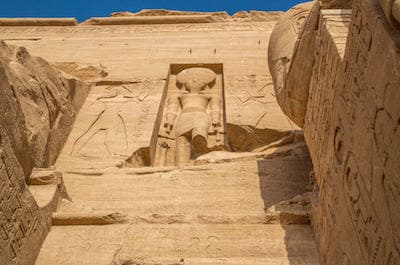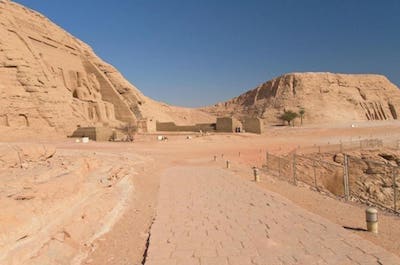No other nation in the world says ‘Welcome’ as often as the Egyptians, and every time, they mean it. While the ancient civilization of Egypt continues to amaze, contemporary Egyptians are equally remarkable.
The Mortuary Temple of Queen Hatshepsut
The Mortuary Temple of Queen Hatshepsut at El-Deir el-Bahri
Historical Context
- Pharaoh: Queen Hatshepsut, one of the few female pharaohs of ancient Egypt, ruling in the 18th Dynasty.
- Location: Situated in the bay of cliffs known as Deir el-Bahri on the West Bank of Luxor, near the Valley of the Kings.
- Construction Era: 18th Dynasty, New Kingdom period.
Architectural Significance
- Design: The temple, known as Djeser-Djeseru (the ‘sacred of sacred’), is renowned for its grand architecture, terraced structure, and alignment with the Karnak Temple.
- Influence: Reflects architectural elements from the Middle Kingdom temple of Mentuhotep Nebhepetre in the same area.
Features and Artistic Elements
- Terraces: Built on three levels with a connecting causeway, previously linked to a Valley Temple and the Nile.
- Gardens: The lower courtyard originally featured exotic gardens with trees.
- Reliefs: The temple’s walls are adorned with intricate and colorful reliefs.
- Expedition to Punt: Famous scenes depicting the journey to the mysterious land of Punt, showcasing exotic animals, plants, and the local people, including the depiction of the ‘Queen of Punt’.
- Divine Birth and Coronation: Illustrations of Hatshepsut’s divine birth narrative and her coronation ceremonies, affirming her right to rule.
Restoration and Alterations
- Damage and Restoration: Over time, parts of the temple were damaged and defaced, notably by Hatshepsut’s successor, Thutmose III. Restoration efforts have been ongoing to preserve its original splendor.
- Current State: The temple stands as a testament to Hatshepsut’s reign and architectural vision, attracting scholars and tourists alike.
Significance in Egyptian Culture
- Cultural and Religious Importance: The temple served as both a commemorative monument for Hatshepsut and a religious center for the worship of Amun and other deities.
- Archaeological Value: Provides insights into the religious beliefs, artistic styles, and trade expeditions of the New Kingdom era.
Visitor Experience
- Tourism: A key attraction in Luxor, offering a unique glimpse into the life and legacy of one of Egypt’s most intriguing pharaohs.
- Educational Value: The temple’s reliefs and structure offer a rich educational experience for those interested in ancient Egyptian history and mythology.
Conclusion
The Mortuary Temple of Queen Hatshepsut at El-Deir el-Bahri is a monumental tribute to one of Egypt’s most extraordinary rulers. Its architectural elegance, richly detailed reliefs, and historical significance make it a crown jewel of ancient Egyptian heritage in Luxor.



